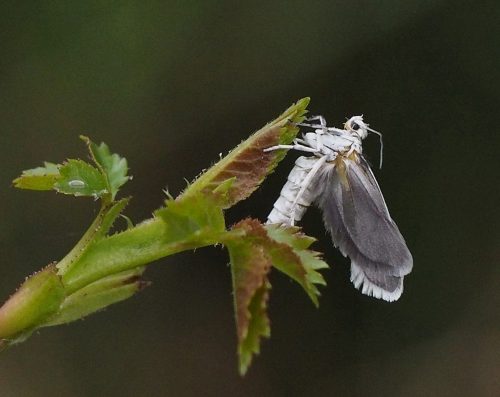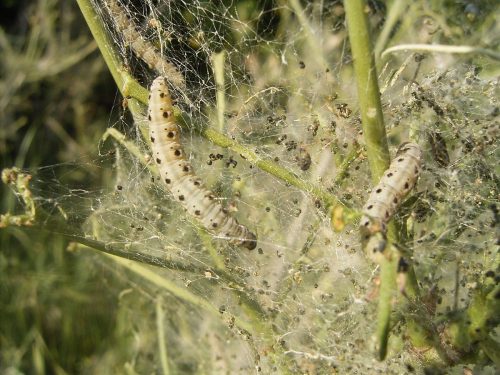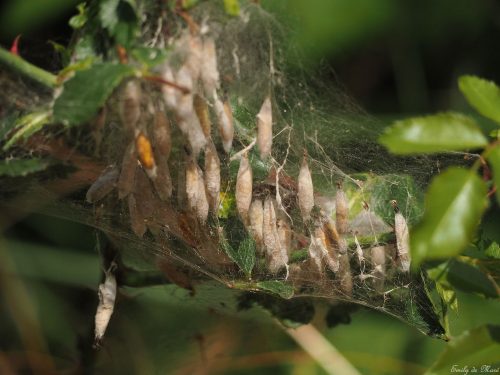ermine moths are many: some seven hundred species exist.
Ermine moths (Yponomeutidae) are many: some seven hundred species exist. The Ermine moth is a butterfly whose caterpillars make sturdy webs. These can cover entire shrubs and trees. The caterpillars live in communal webs and can eat a tree or shrub completely bare in a short period of time. They don’t do much damage: the tree or shrub generally just sprouts again a few weeks later.
Ermine moths lay their eggs in the bark of host plants (especially: apple, bird cherry, spindle tree, willow, plum, hawthorn and blackthorn). The eggs hibernate in the bark and in spring the larvae (caterpillars) hatch.
In the vegetable and ornamental garden, you can find the spindle ermine (Yponomeuta cagnagella), the bird-cherry ermine (Y. evonymella), the apple ermine (Y. malinellus) and the little ermel (Swammerdamia pyrella), among others.
Earwigs, parasitoid wasps and birds are among the natural enemies of the caterpillars of the ermine moths.
Where to find
- Vegetable plot and ornamental garden
Control
Remove the leaves with webs and branches in early spring to keep the population limited.
Prevention
In autumn, remove the webs; they contain eggs. Create an earwig friendly environment by hanging earthenware flower pots filled with hay or straw upside down from apple, pear and cherry trees.



